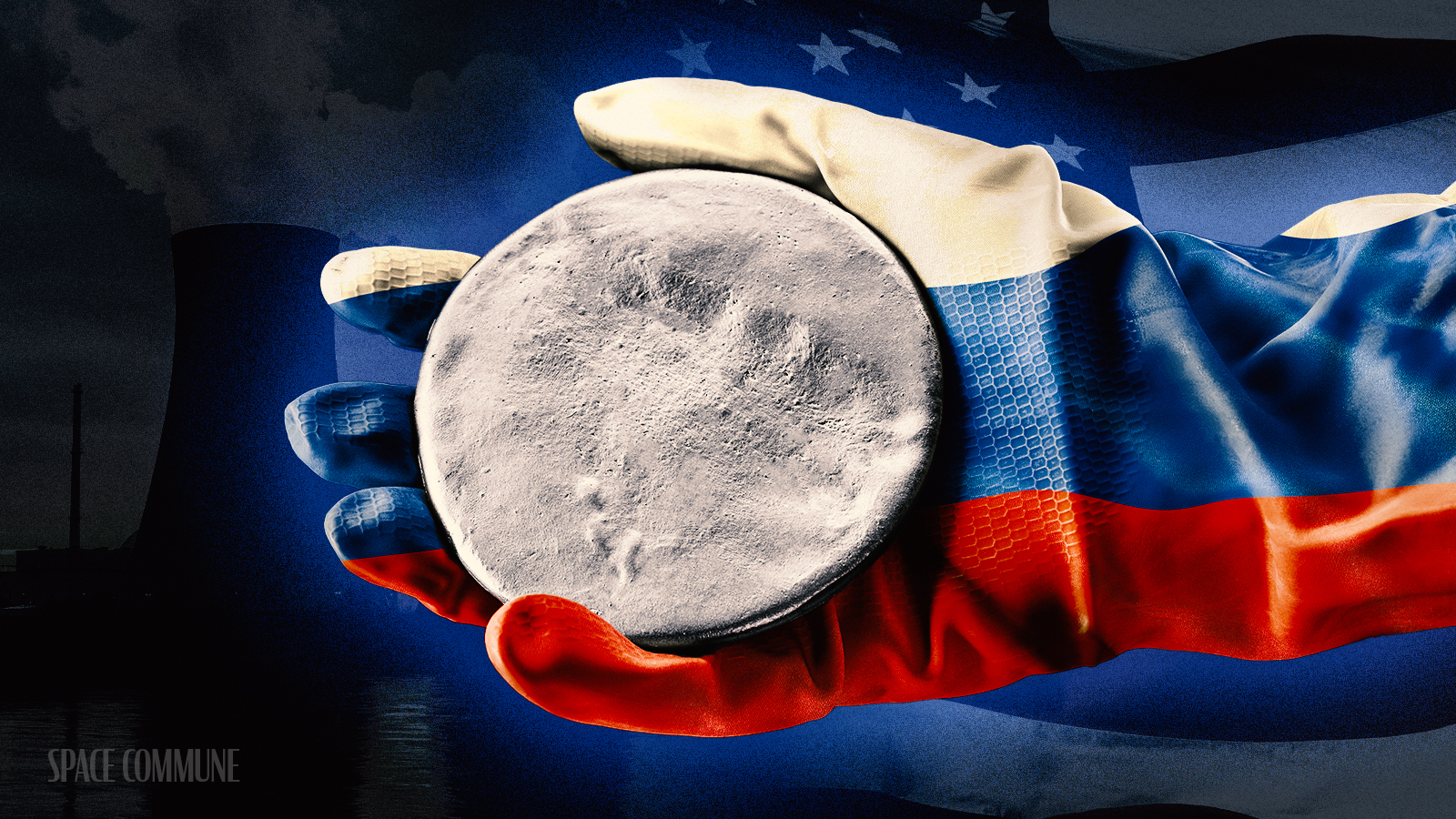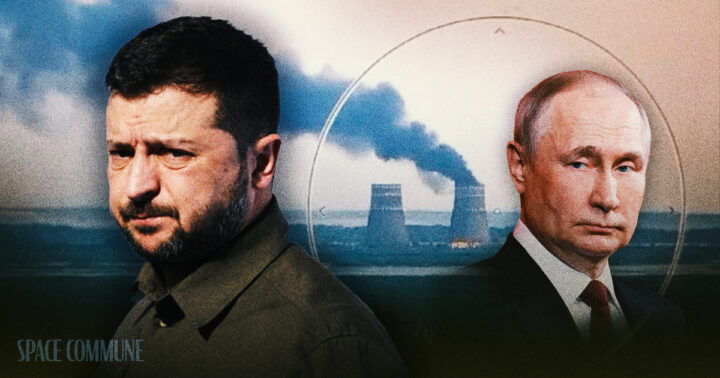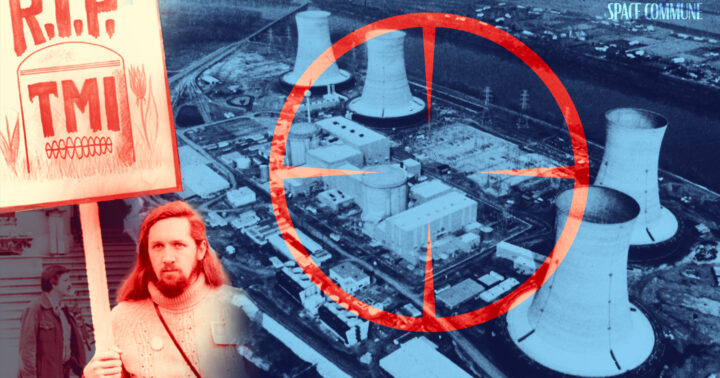As we approach the 2024 elections in the United States, both political parties are insisting that nefarious Russians and Chinese are lurking around every corner. Peering through the vulgar McCarthyism, one can see how the United States and the larger West are paying a dear price for their anti-Russia fearmongering specifically in the world of nuclear energy.
After the start of the Russian SMO in Ukraine two years ago, the West made a blustery wave of misguided sanctions and economic threats. As a blaring sign of the divergent paths that the BRICS+ and G7 nations are taking, Russia actually grew faster than any G7 nation did in 2023, sanctions and all:
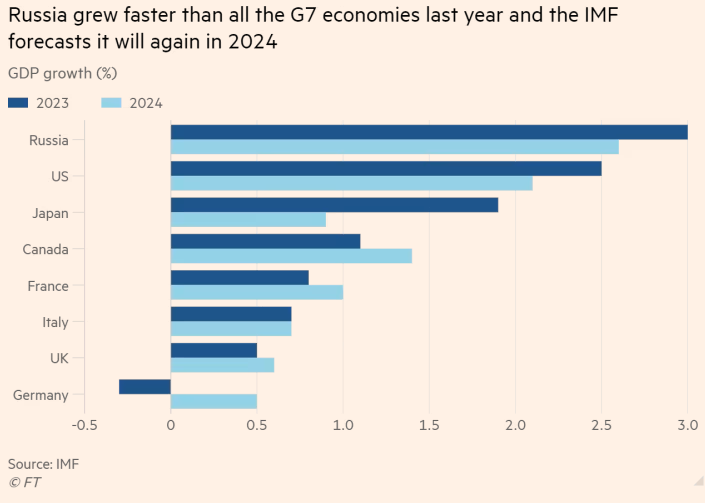
And for Russia’s cottage industries like hydrocarbon exports, they simply replaced old buyers with new ones.
Oil:
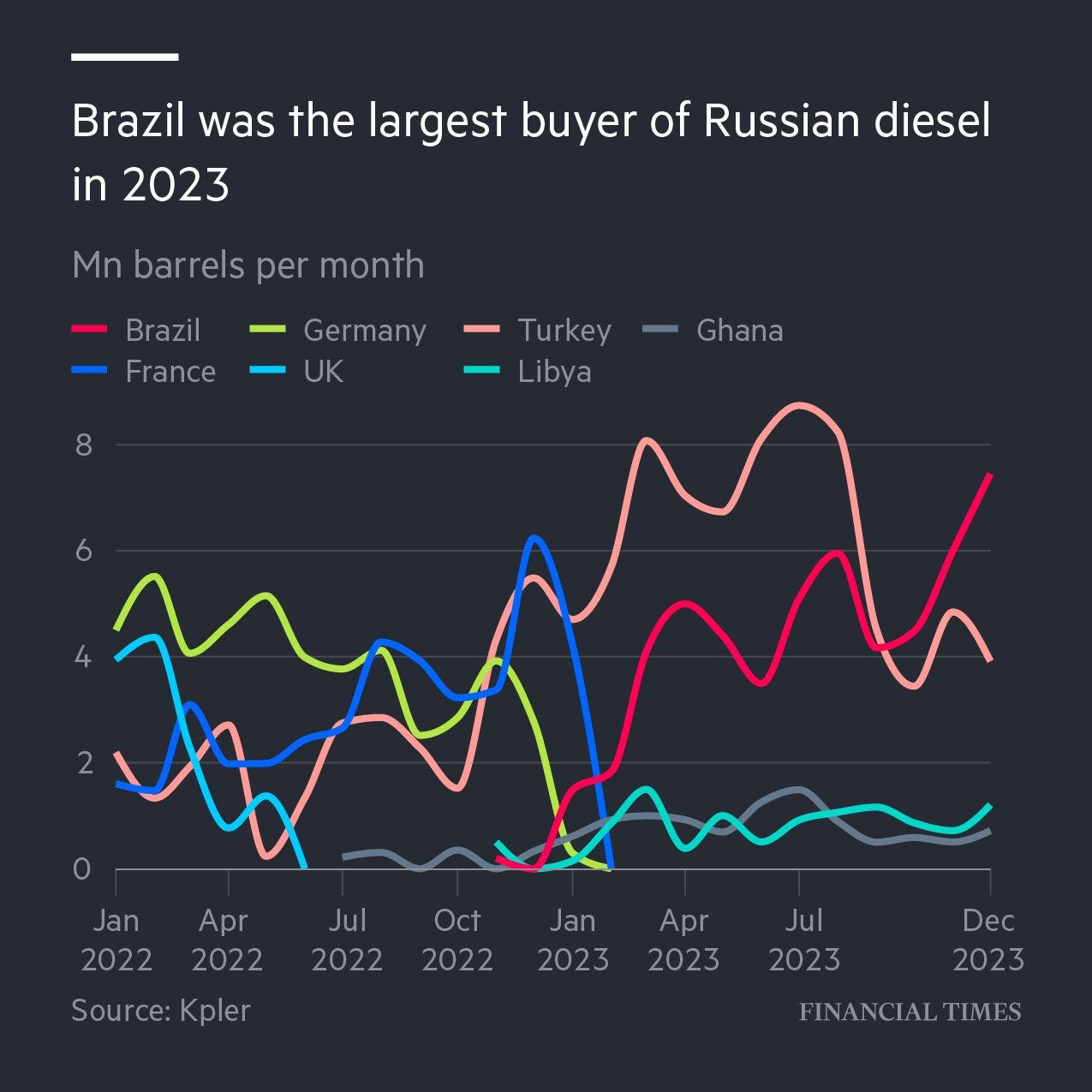
Nuclear fuel:
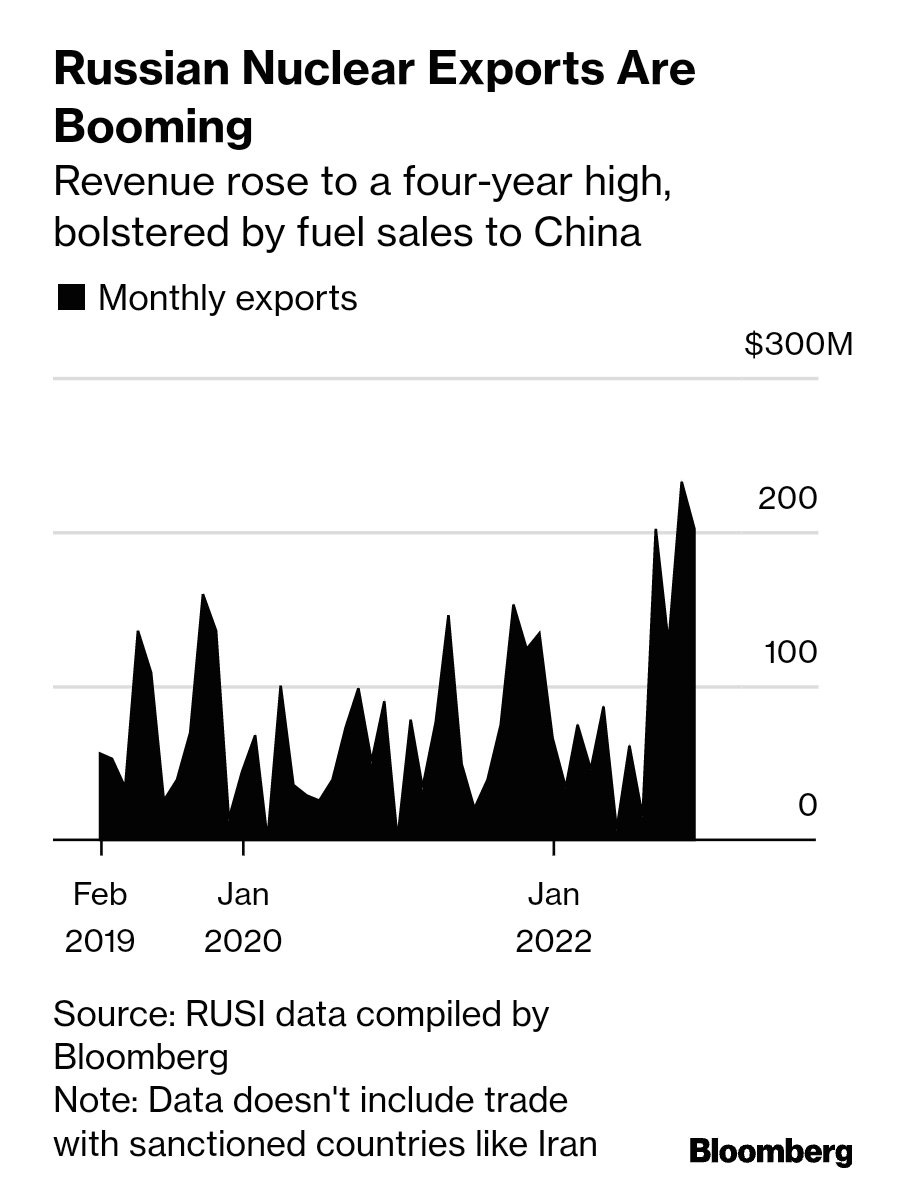
This was thanks in large part to Russia’s patient, nationalized investment in every stage of energy cycles; from securing mining and extraction, to processing fuel, and then transporting it to power producers around the world using railroads, ships and pipelines (unless they were blown up). Russia’s oil and gas industries account for roughly 16% of the country’s economy and 45% of their national budget; meanwhile, 20% of their electrical grid relies on their cutting-edge nuclear power fleet. Russia also finances, builds, and provides nuclear fuel for nuclear power plants in Bangladesh, Belarus, China, Egypt, Finland, India, Iran and Turkey.
For China’s part, their big bet starting in 2010 was to begin stockpiling massive amounts of cheap nuclear fuel, invest in uranium mines in Niger, Namibia, Kazakhstan, Uzbekistan and Canada, and to develop indigenous nuclear power technology that enabled them to increase their reactors’ power production by 6X. China’s $440B plan for nuclear power expansion will provide the baseload needed to start retiring their massive coal fleet and make their investments in renewable energy worlds more stable than the West’s chaotic plans. To the United States Department of Defense’s alarm, China is buying lots of nuclear fuel from Russia.
The Grand Russia-US Uranium Bargain of 1992
Meanwhile, the United States and the larger West are in between a rock and a hard place. From 1946 to 1974, the United States Atomic Energy Commission, with a clear mandate to “promote world peace, improve the public welfare and strengthen free competition in private enterprise,” built 113 nuclear power plants, 72 of which are still operational today. At the end of 1974, President Gerald Ford effectively killed the U.S. nuclear industry by bowing down to the two-headed monster of oil cartels and Small is Beautiful/Club of Rome absolutists, disbanding the Atomic Energy Commission and replacing it with the Nuclear Regulatory Commission.
Under the NRC regime, nuclear energy in the United States became an entropic enterprise, with a scant 22 reactors built from 1975 to the present day, and only two this century. The NRC is mandated to protect public health and safety related to nuclear energy; in function, its main task is to anticipate and coddle hysterical safety concerns rather than expand and promote the use of nuclear energy.
The flatlining of the Western nuclear industry coincided with the supposed “end of history,” where a drive for higher living standards and growth was replaced by slow deindustrialization, decay and free trade policies. After all, the USSR was collapsing and being looted by banksters, and China was becoming the world’s factory.
In what at the time was seen as a humiliation for the Russians, a “Grand Uranium Bargain” was finalized in 1993 between Clinton’s US and Yeltsin’s Russia. It locked in a massive disarmament of USSR-era nuclear warheads, where Russia’s nationalized nuclear corporations would convert the uranium into usable nuclear fuel to be sold to America’s nuclear fleet. At the same time, a fraction of US warheads were also disarmed; this was a one-sided affair.
The program lasted until 2013, and the created fuel was so cheap that the United States dismantled its own capability to produce nuclear fuel by privatizing the government’s once-mighty uranium enrichment program. It’s estimated that during the length of the program, 10% of the United States’ electricity was generated from Soviet warheads.
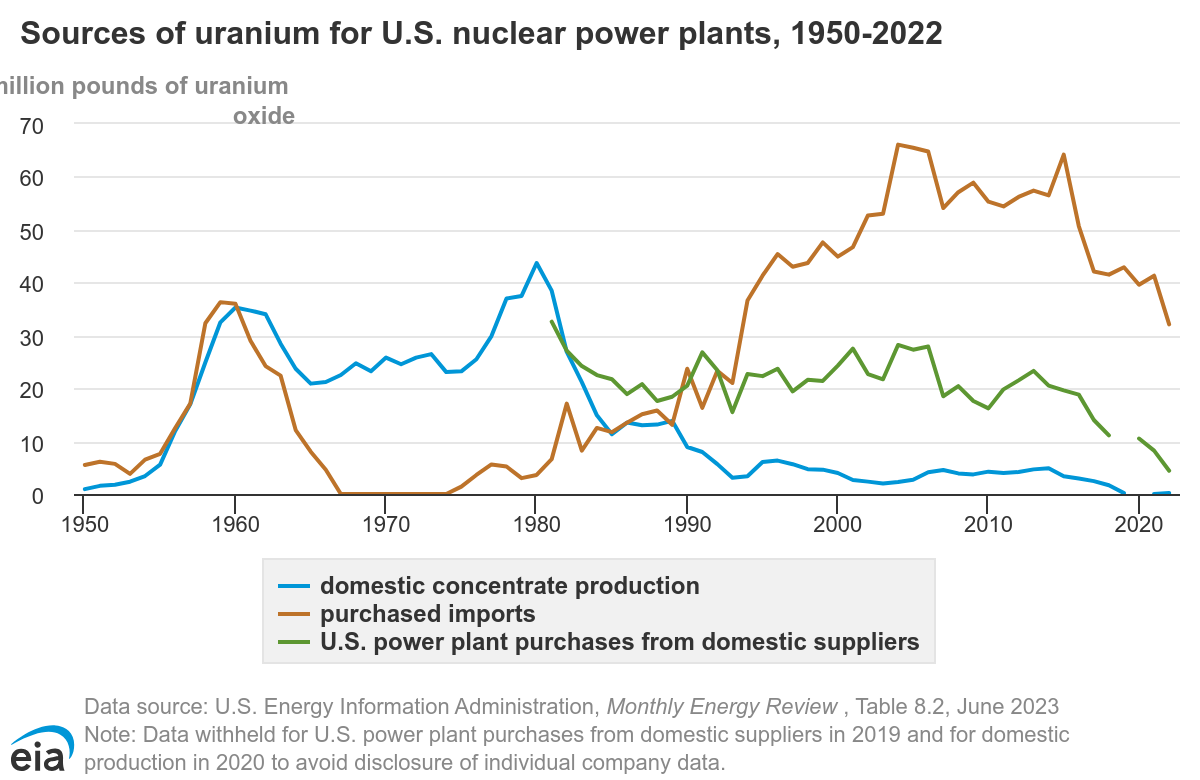
These trends were also reflected globally; according to a report from the Center on Global Energy Policy, Russia held a market share of 46% of enriched uranium, including 30% of the EU market, thanks in part to flooding the market with cheap fuel.
Just as with China’s grand bargain with the West on the One Child Policy was in exchange for being allowed to open up and become a superpower, Russia’s grand bargain on nuclear disarmament allowed them to build energy dominance through sheer ability to produce fuel.
None of this was a problem for the West while the world was stuck in an “end of history” pattern. As long as Russia meekly allowed its country to be sold for spare parts while NATO continued to encircle it, there was no issue. Western countries deferred maintenance and used the controlled demolition of its nuclear and hydrocarbon infrastructure to placate environmental activists and build liberal/NGO electoral coalitions. But the pro-growth, anti-entropic emergence of the BRICS+ alignment has suddenly awakened nuclear energy from its 50-year slumber.
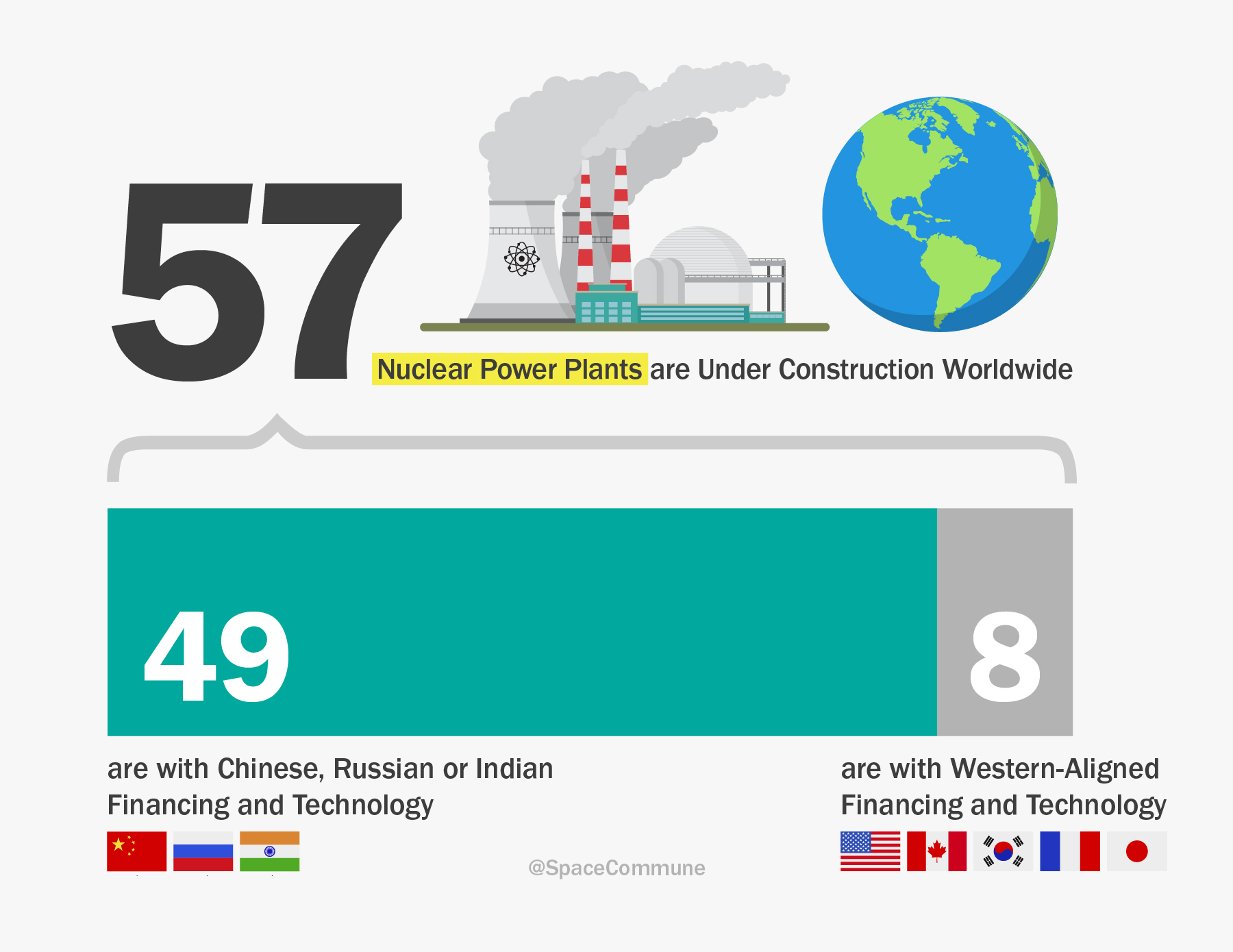
National sovereignty is impossible without nuclear energy
The West has learned a hard, two-fold lesson: they can’t keep the lights on, much less match the BRIC alignment’s expansion, much less build the semiconductors, war machines, vertical farms and data centers of the future without nuclear energy. And just as importantly, the developing world is not buying their Great Reset plan for relying on wind turbines and solar panels to build their countries; instead, the developing world is working with China to build hydrocarbon infrastructure and Russia to build nuclear power plants.
Nuclear power plants require a large up-front investment into the physical economy of a nation, which pays itself off several times by providing electricity when the sun isn’t shining, the wind isn’t blowing, or when gas and oil shipments become expensive and rare.
That’s why renewable energy advocates focus so much on why renewables are “so cheap!” while nuclear is expensive; it’s expensive because it provides a 2-3X return on GDP while renewables are beloved by degrowthers and foundation-funded socialists who want to measure a society’s wealth with metrics like happiness and biodiversity.
These dynamics explain why there has been an overnight shift in the West about nuclear energy. After decades of overhyped “disasters” like Three Mile Island and Fukushima (where no one died from radiation) and conspiracy-fueling movies like The China Syndrome, the most recent COP28 summit featured a pledge from 20 G7-aligned countries to triple the amount of nuclear energy in the world by 2050.
Even the most strident Green New Deal-style activists like AOC, Greta Thunberg and U2 have suddenly changed their stance about nuclear energy.
Russia’s Enemy Within: Foreign-Funded Environmentalists
Since 1989, another lever of Western influence in Russia has been the funding of zealot environmentalists, who lobby and protest with varying degrees of success against state-owned hydrocarbon and nuclear projects under the guise of helping the Russian people and the planet. One of the most loathsome is Ecodefense, which was labeled by the government as a “Foreign Agent” in 2014.
Their platform is as follows:
- Shut down all Russian-build nuclear reactors in countries like Bulgaria, Czech Republic, Finland, Holland, Slovakia and Ukraine, immediately causing power outages and mass chaos
- Stop building nuclear power plants anywhere and build “cheap” renewables instead that can’t support industry
- Stop buying nuclear fuel or hydrocarbons from Russia, because they enable Vladimir Putin’s war machine, immediately causing energy prices to skyrocket. This platform is far beyond what most environmentalists are willing to stand behind these days, and it’s a naked attack on Russia.
While ongoing lawsuits and legislation against Ecodefense by the Russian government have hamstringed their effectiveness within the country, the below Democracy Now! clip from the most recent COP conference shows that Ecodefense (and allies like Friends of the Earth Europe) are not even in the mainstream of the environmental movement anymore, owing to the harsh limits of the green transition and their anti-nuclear zealotry.
A problem of the West’s own making
Since attempts to subvert Russian politics with environmentalism failed, and a military victory in the Western-funded war in Ukraine is impossible, and efforts to degrow the nuclear industry with renewables are proving untenable for ratepayers, utilities and industries alike, the United States and larger West is facing a massive problem of its own making: it begrudgingly has to re-learn how to mine, process and ship nuclear fuel.
Uranium is fairly abundant across the world, and functioning mines exist in many countries friendly to the G7, including Canada.
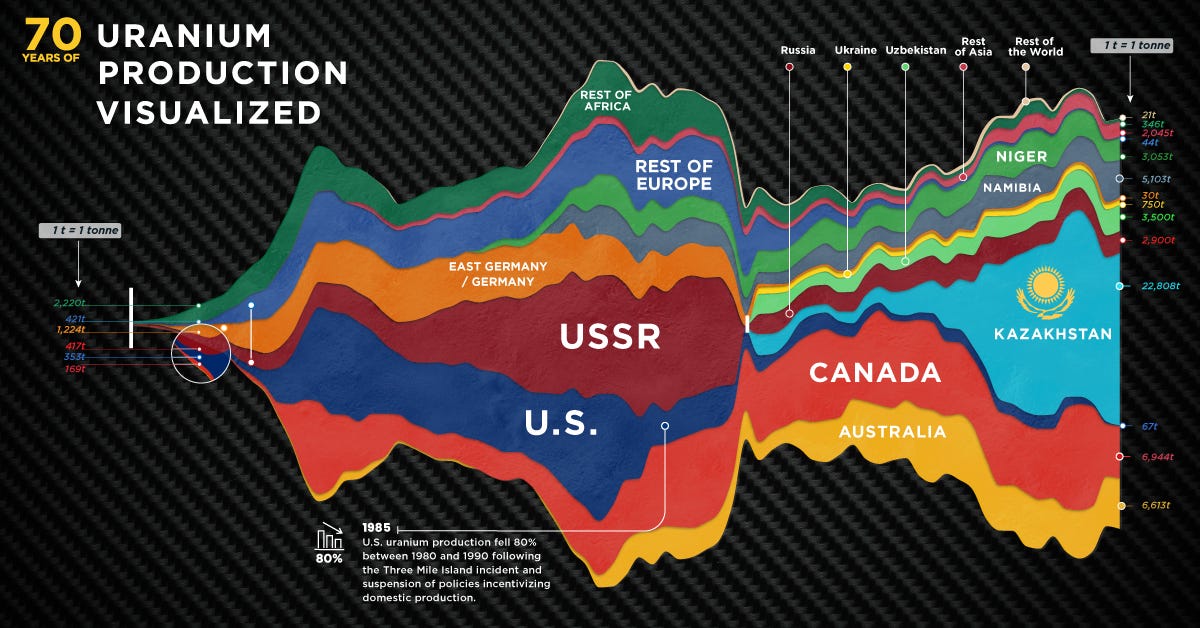
The problem is processing the raw material into fuel that can be used to operate reactors.
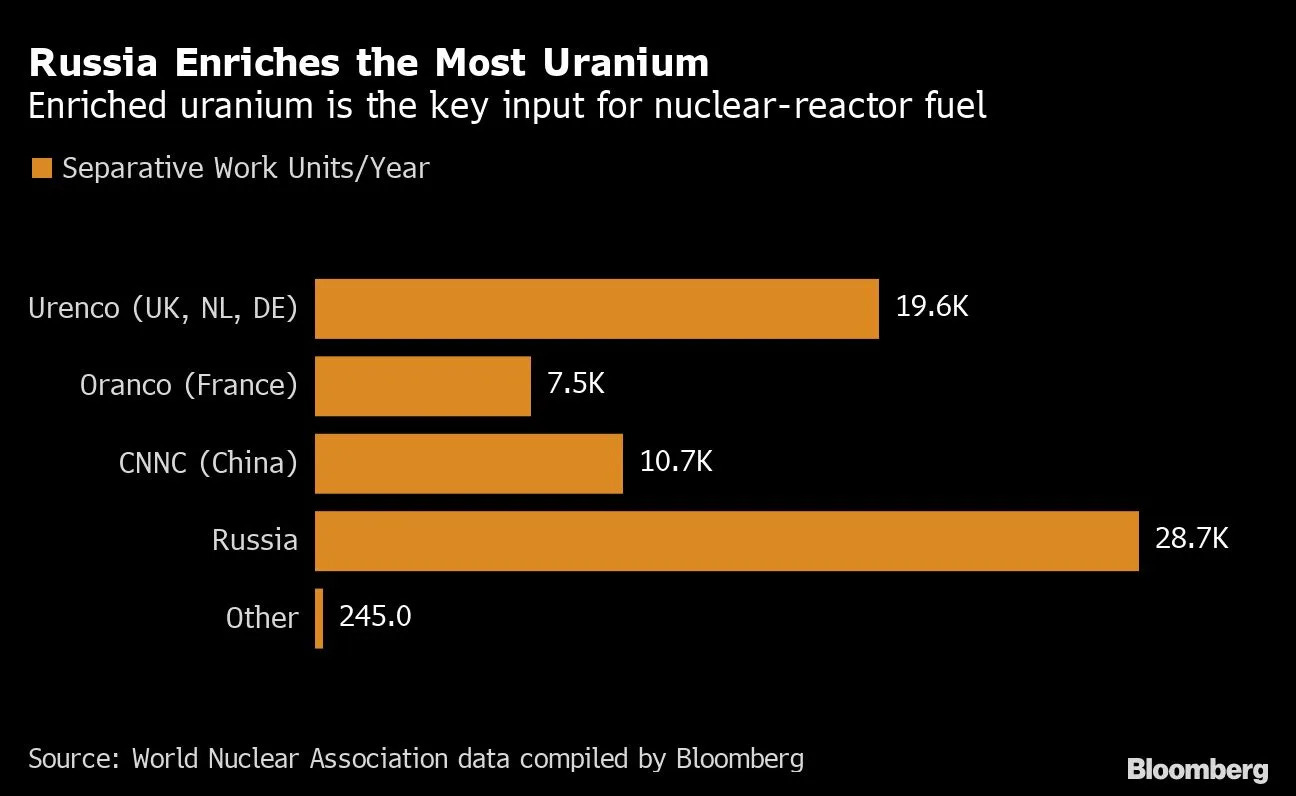
This problem is compounded with advanced reactor designs, like Small Modular Reactors. Hilariously, nine out of ten advanced reactor designs funded by the U.S. Government to overcome the 70s-era criticisms of nuclear energy require fuel that currently is only made in Russia.
Legislation to ban the purchase of Russian nuclear fuel and restart U.S. nuclear production have been bundled with larger bills in the Congress and Senate. Most recently, the infamous package to fund the continued wars in Israel and Ukraine along with a border wall contained a provision to fund nuclear enrichment with $2B. The Congress recently also passed a bill banning the import of nuclear fuel from Russia; however, the bill stalled in the Senate.
At a symposium this week held by the NATO-funded Atlantic Council’s Eurasia Center, Senior Advisor Debra Cagan revealed why bans and and sanctions are not likely to happen:
“I would be the first person to go after Russia with sanctions if I thought it was the correct and pragmatic approach to take. Unfortunately… we are not in the position yet to have nuclear security, and safety and energy security in this country without continuing to import Russian uranium products… And it’s critical if you’re going to address climate change to have nuclear be a huge part of that solution. We’re not going to achieve those goals any other way. I would be the first to line up to smack Russia down if there was any reasonable way to do this without either making Russia more money or turning them to new markets… Rosatom can simply say we’ll cut these contracts, go to the Indo-Pacific, and make [triple] what I’m getting from the US contracts.”
The best reasons to develop nuclear power
Some nuclear power advocates may think that going with the flow, and playing into saber-rattling against Russia and China is what will get their favorite industry going again in the West. And for now, if the Atlantic Council is to be believed, that is what’s working. But for something as important as nuclear energy, geopolitical pragmatism is not enough. Conditions can always change. We need to commit to a higher purpose: nuclear is not just convenient, it’s the best form of energy we have available for promoting peace and expanding human possibilities.
The potential of nuclear power was already known in 1953, during the heyday of the Atomic Energy Committee and Eisenhower’s Atoms for Peace program.
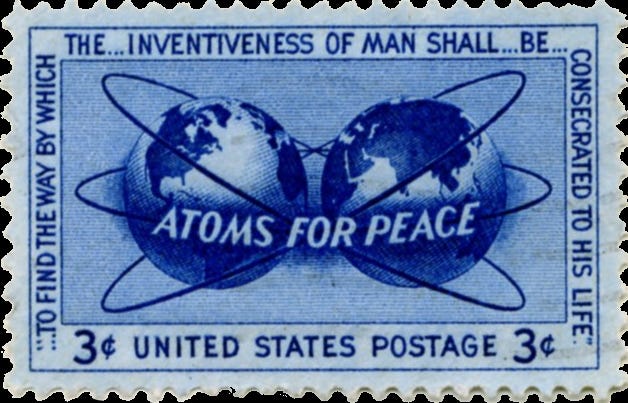
From Eisenhower’s speech at the time:
The more important responsibility of this atomic energy agency would be to devise methods whereby this fissionable material would be allocated to serve the peaceful pursuits of mankind. Experts would be mobilized to apply atomic energy to the needs of agriculture, medicine and other peaceful activities. A special purpose would be to provide abundant electrical energy in the power-starved areas of the world.
Thus the contributing Powers would be dedicating some of their strength to serve the needs rather than the fears of mankind.
The United States would be more than willing – it would be proud to take up with others “principally involved” the development of plans whereby such peaceful use of atomic energy would be expedited.
Of those “principally involved” the Soviet Union must, of course, be one.
By embracing a paradigm that prioritizes cooperation over conflict, the West can chart a course towards a future where nuclear power serves as a catalyst for progress and prosperity, embodying the principles of peace and shared prosperity envisioned by its earliest proponents.
